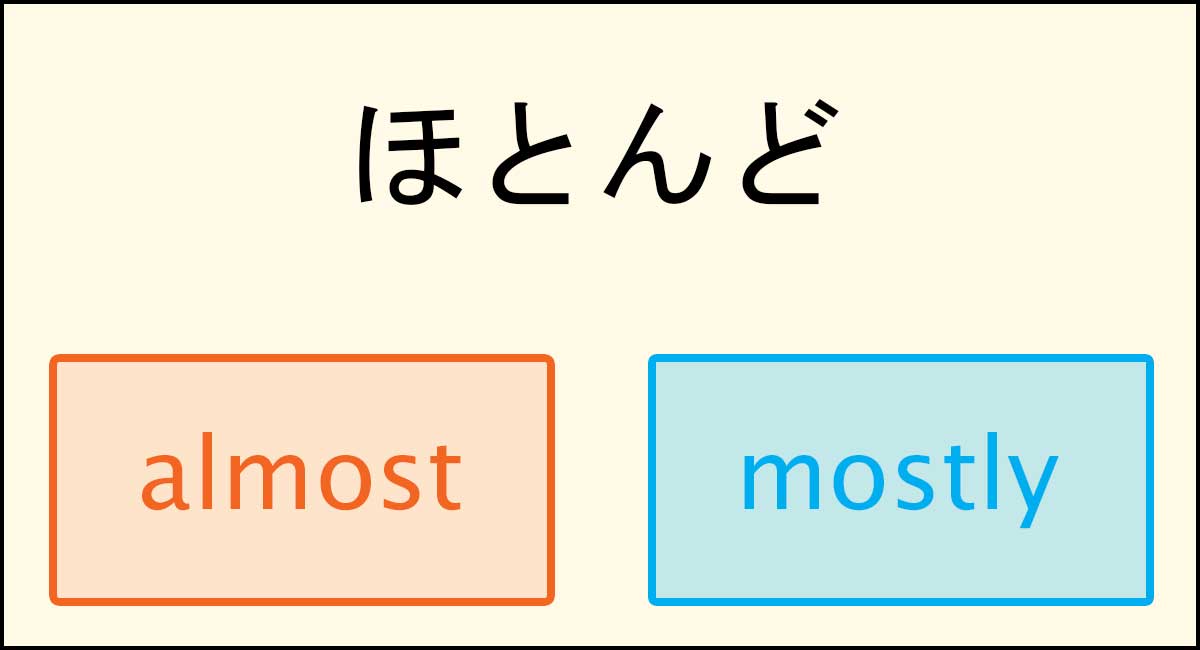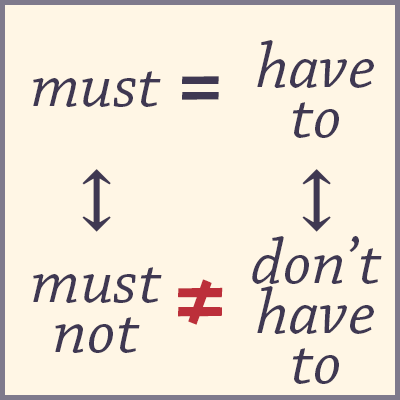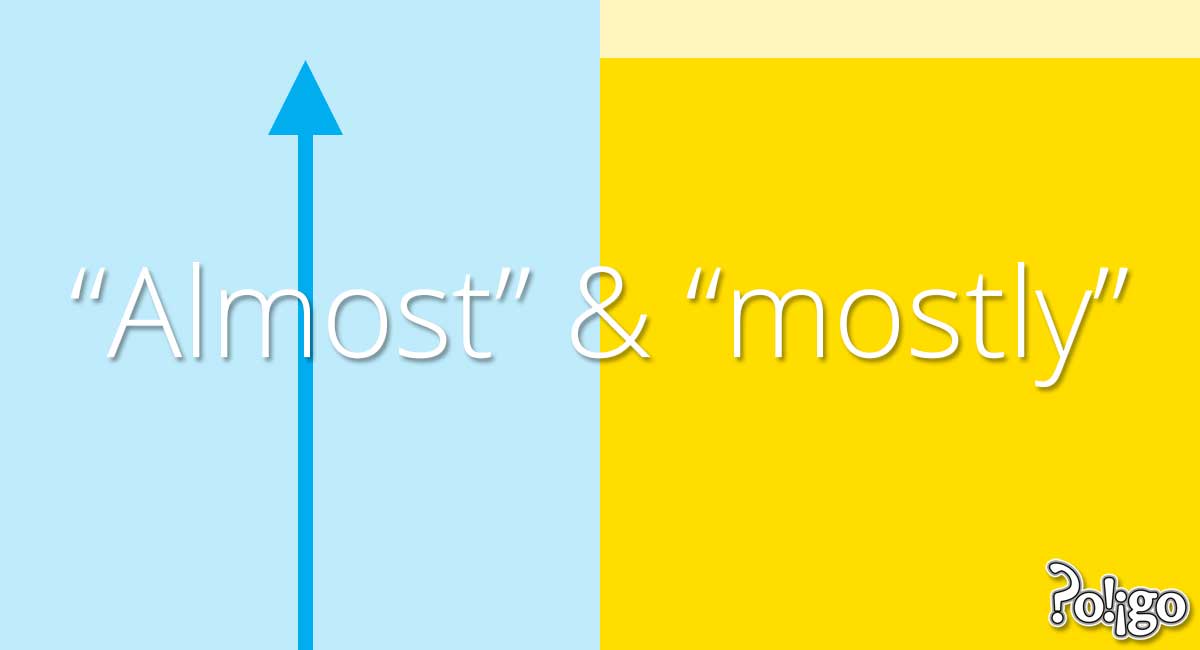
Equality is good in politics (平等) and maths (等式), but not in language. A good example of this is "almost" and "mostly", which can be tricky for Japanese speakers to translate. For example, you might think:
"almost" = ほとんど, AND ほとんど = "mostly", SO "almost" = "mostly"
Wrong. It is pretty good logic. It works for maths, but it doesn't work for languages!
In maths, it is called transitivity (推移関係):
X = Y, AND Y = Z, SO X = Z
Right? Sure, in maths, but languages are different. Why? Because of this: =.
The problem is that when it comes to anything abstract (無形) in language, = is a very dangerous way to think.
The true relationship between ほとんど, "almost" and "mostly" is shown in the picture above. Sometimes ほとんど means "mostly" and sometimes ほとんど means "almost". It's because when you translate context is very important. When you go from Japanese to English (or the other way), often translations are not one-to-one but one-to-many (or many-to-one).
This means that:
"almost" = ほとんど, AND ほとんど = "mostly", BUT "almost" ≠ "mostly"
So forget =, and start to think about 同じくらい, だいたい同じ or 何となく. Because thinking that things are equal will lead you into the logic trap: 非論理的なロジック!
Vocabulary is more complex than using a dictionary and finding the first word. You have to look at how and when the words are used. That means if you think ほとんど in Japanese, you need to be careful. Sometimes you will need to say "mostly" and sometimes "almost".
Some other cases of the results of this thinking are these:
- understand = know (分かる);
- teach = tell (教える);
- listen to / hear = ask (聞く).
Can you think of some other cases where you are confused because of this false logic (誤った論法)?
Another example of when mathematical logic does work is when you think about "have to" and "must". In maths, this is true:
A = B
X is the opposite of A and Z is the opposite of B
SO X = Z
"have to" = "must"
the opposite of "have to" = "don't have to"
the opposite of "must" = "must not"
BUT "don't have to" ≠ "must not"
Visually:

"Have to" and "must" mean you have no choice. I have to go to work. I must work. I need to pay my rent.
"Don't have to" means I can choose. I don't have to work tomorrow. It's my choice, so I might or might not.
"Must not" means there is a rule that says it is not allowed. You must not drive over the speed limit.
Clearly, "don't have to" and "must not" are not the same thing.


